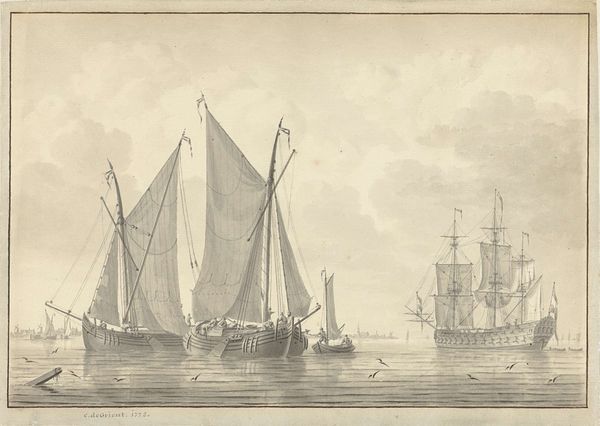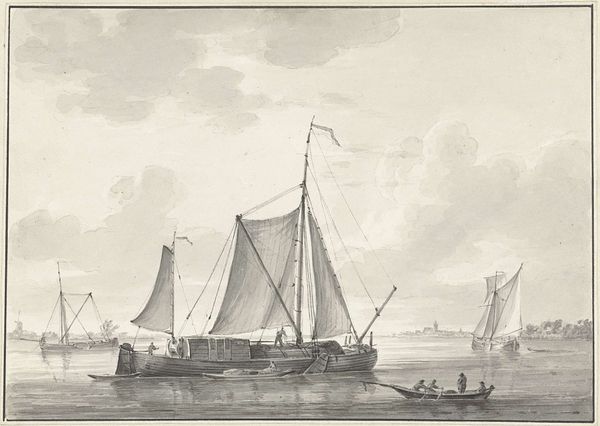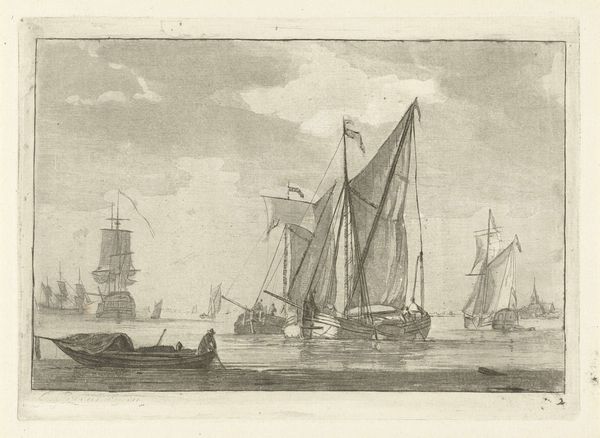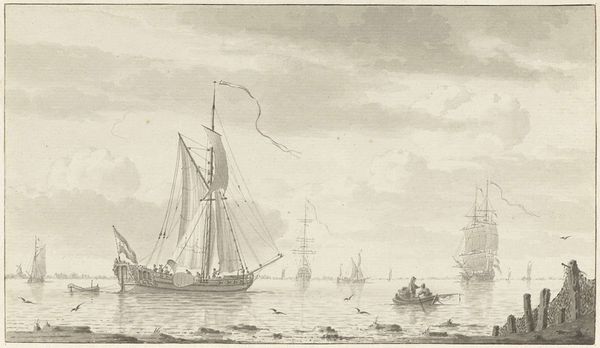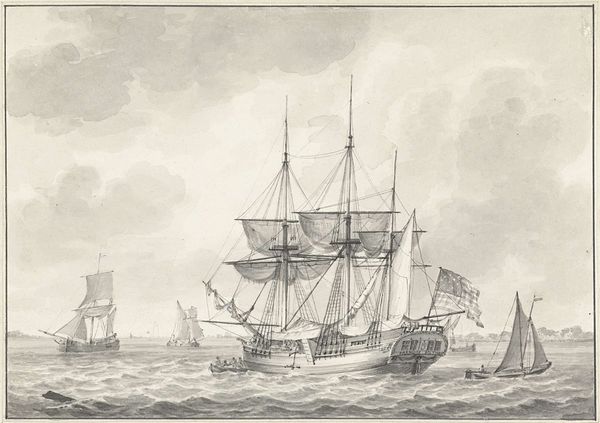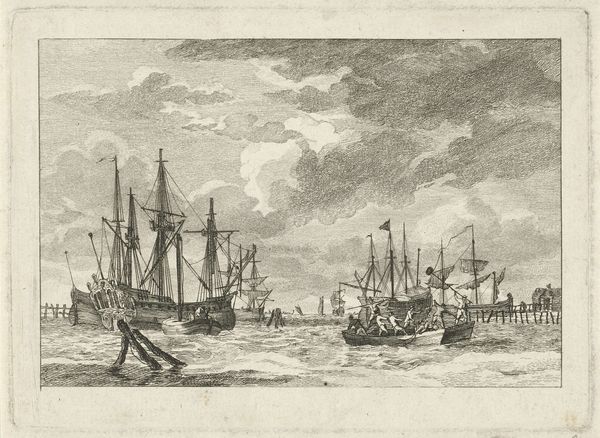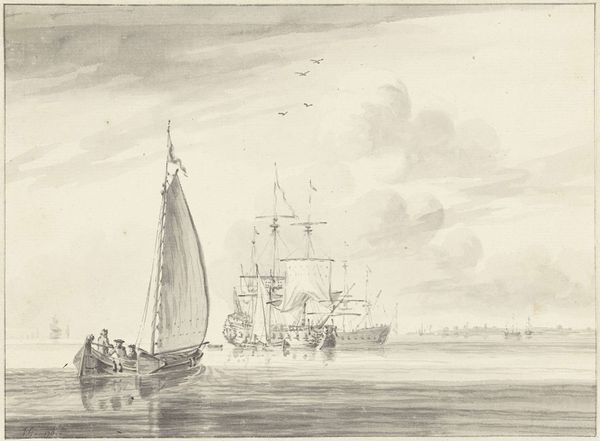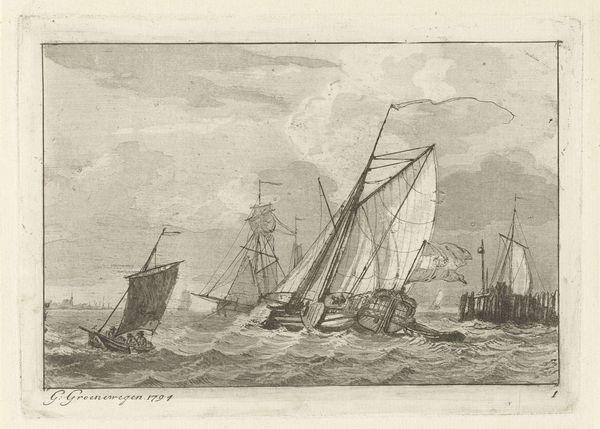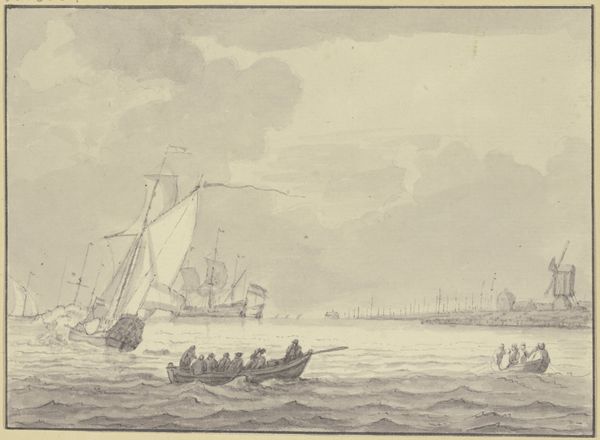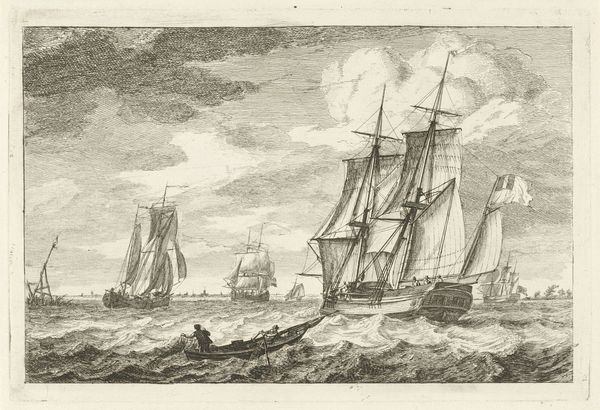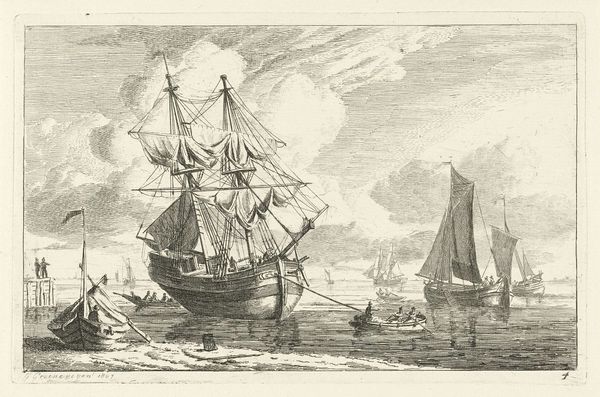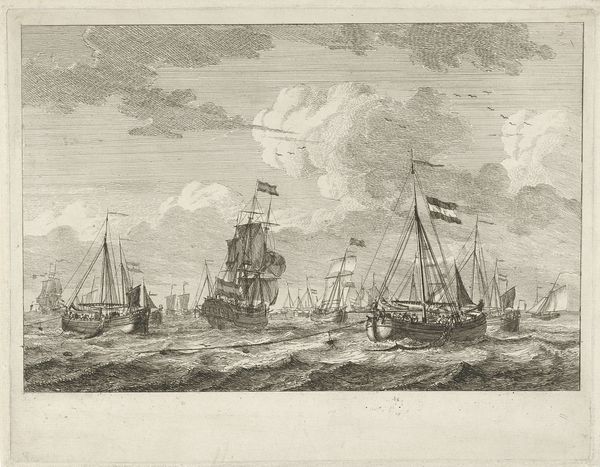
drawing, ink, pencil
#
pencil drawn
#
drawing
#
16_19th-century
#
pencil sketch
#
landscape
#
ink
#
pencil
#
19th century
#
pencil work
#
watercolour illustration
#
realism
Dimensions: height 22 cm, width 32 cm
Copyright: Rijks Museum: Open Domain
Curator: Hendrik Huygens created this work, "Fort Zeelandia," before 1859, using pencil and ink to realize the landscape. What are your immediate thoughts? Editor: A somber elegance, I'd say. The monochrome palette evokes a historical feel, but there's also something a little melancholy about the muted tones and turbulent sea. Curator: Absolutely. Looking closely, we can see the detailed pencil work really emphasizes the material reality of this fort— the stones, the flag— alongside the labour involved in seafaring, both in the sailing ship and the smaller boat filled with figures. It makes you consider the conditions of production and the human cost. Editor: The Dutch flag is such a charged symbol of trade and colonisation, and these visual signifiers echo through time, don't they? You see the fort as a literal structure of colonial power. It's a very imposing image that lingers in collective memory. Curator: Indeed, and thinking of that colonial aspect, consider the pencil itself as a tool in mapping and controlling the space, literally drawing the lines of power and influence across the territory, something almost mundane, yet entirely bound to the process of colonization. Editor: The presence of that sailing ship specifically references the exploration of unknown worlds; each of its design choices implies both opportunity and exploitation in equal measure, a powerful ambivalence, right? Curator: Precisely, it highlights the network of global exchange and exploitation underpinning this view. This landscape embodies both a picturesque scene and a very deliberate assertion of power over resources and people. Editor: These overlapping readings underscore art's power to connect the past and present. It’s a powerful depiction of a specific moment in time. Curator: It prompts reflection on labor and control – from pencil strokes on paper to the realities faced in such colonial endeavors. Editor: Definitely. And these layers of history remind us that the visual world speaks volumes about our collective narrative.
Comments
No comments
Be the first to comment and join the conversation on the ultimate creative platform.
